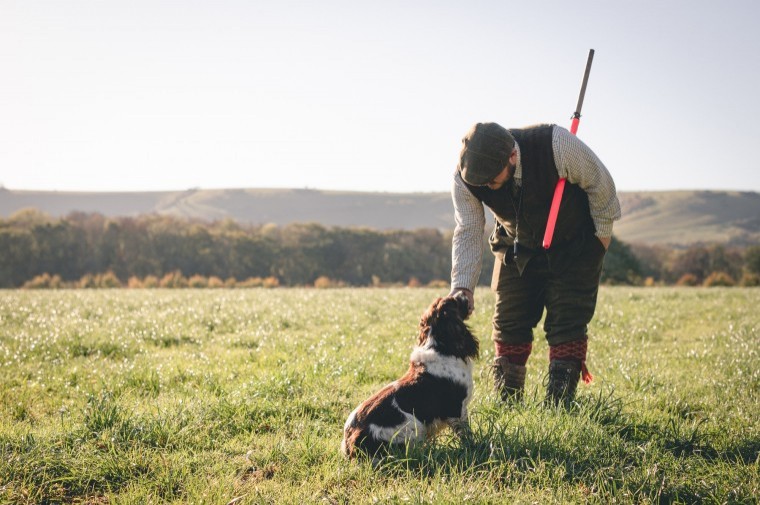As the year draws to a close, this is our last article in the series. We began by sharing an update on how the college is continually evolving to ensure we are ready to meet the future needs of the sector. In spring we provided a summary of Lambert Farm and its current performance and growth. But what about the wider estate and its use?
In 2017 a full ecological survey was undertaken, the outcome of which was an ecological strategy for the wider estate for the next three years. Integral to achieving this is to ensure that the wider college estate is managed to the highest standards for the benefit of the environment and our many estate users. This also enables us to provide the highest quality educational opportunities for studying best practice land management along with environmental and wildlife conservation.
The report was developed by undertaking an extensive review of all the various environmental surveys, reports and management plans, which had been produced over recent years. The college consulted with key organisations including Natural England, the Forestry Commission, the Ouse and Adur Rivers Trust, Wild Trout Trust and Sussex Flow Initiative to produce the final strategy and action plan.
Most of the college estate lies within the South Downs National Park. The college owns 460 hectares which undulates gently northwards over the Sussex Low Weald, but actively manages over 750 hectares of land. The geology ranges from chalk at an altitude of 210m above sea level to heavy Gault clay in the Weald at 40m above sea level. This varied geology gives rise to a range of soil types suitable for farming enterprises such as arable, dairy and sheep supporting a wide range of wildlife habitats including ancient bluebell woodlands, historic hedgerows and chalk streams.
There are many sites of archaeological importance across the estate including prehistoric burial mounds. On the Weald, the most important archaeological site is the Plumpton Roman Villa situated on the estate. We are committed to actively monitoring the condition of all archaeological sites to check there is no degradation and support archaeological excavations. In 2017, part of the remains of a second large masonry building, a bath house, were found at the west of the house and this summer the full footprint of the former bathhouse was revealed. Other finds this summer include the complete profile of a large jar and fourth century coins.
The woodlands on the estate are ancient woodlands which have existed since 1600. The vision for the woodlands is that they should be managed primarily for conservation while providing first-class educational opportunities for forestry, gamekeeping and countryside management students.
Our Forestry & Arboriculture and Countryside & Environment curriculum teams have been working with the Forestry Commission to approve our woodland management plan. We have re-established the woodland steering group to implement actions from the plan. It includes the thinning out of ash due to die back, replacing with new species and protecting veteran trees. We continue with hazel coppice rotations, improvements of rides, conservation of wet woodlands and surveying our veteran trees.
Wherever possible, students across programmes such as Agriculture, Countryside & Environment and Game & Fisheries Management are involved in the active management of the estate and the environment linked to modules. Last year, Level 3 student George King was awarded top student project by the South of England Agricultural Society for his work on hedgehog conservation.
Level 3 Countryside students have been carrying out a range of surveys on the estate. These surveys have shown an increasing abundance of field voles in the tussock grassland in our field boundaries. When carrying out newt surveys across the estate a variety of amphibian species including common and palmate newts were found.
Students use practical sessions to learn about habitat management such as coppicing, boundary and hedgerow management. This term, countryside management students have been undertaking farmland bird surveys on the cover crops managed by the gamekeeping students. The gamekeeping students are involved in projects across the estate as part of their studies to manage and control pests and predators to create a well-managed environment. The students run the College’s commercial game shoot, taking on responsibility for the whole shoot once they enrol in September. The students are in charge of the eight different drives where they split up into groups running their own ‘beat’.
Each and every morning, the students complete ‘routines’ where they have to check their ‘beat’ to identify bird numbers, feed levels and follow code of practice guidelines checking any snares or traps used. This provides students with experience of running commercial shoots, developing their skills.
Principal Jeremy Kerswell said: “The college has been actively farming and managing this land for nearly 100 years. I want to ensure that the legacy we leave for future generations promotes the proactive management and protection of the landscape and the habitats it provides wildlife. As the custodians of this land, it is our duty to educate our students to the highest possible standards on best practice land management and conservation.”




